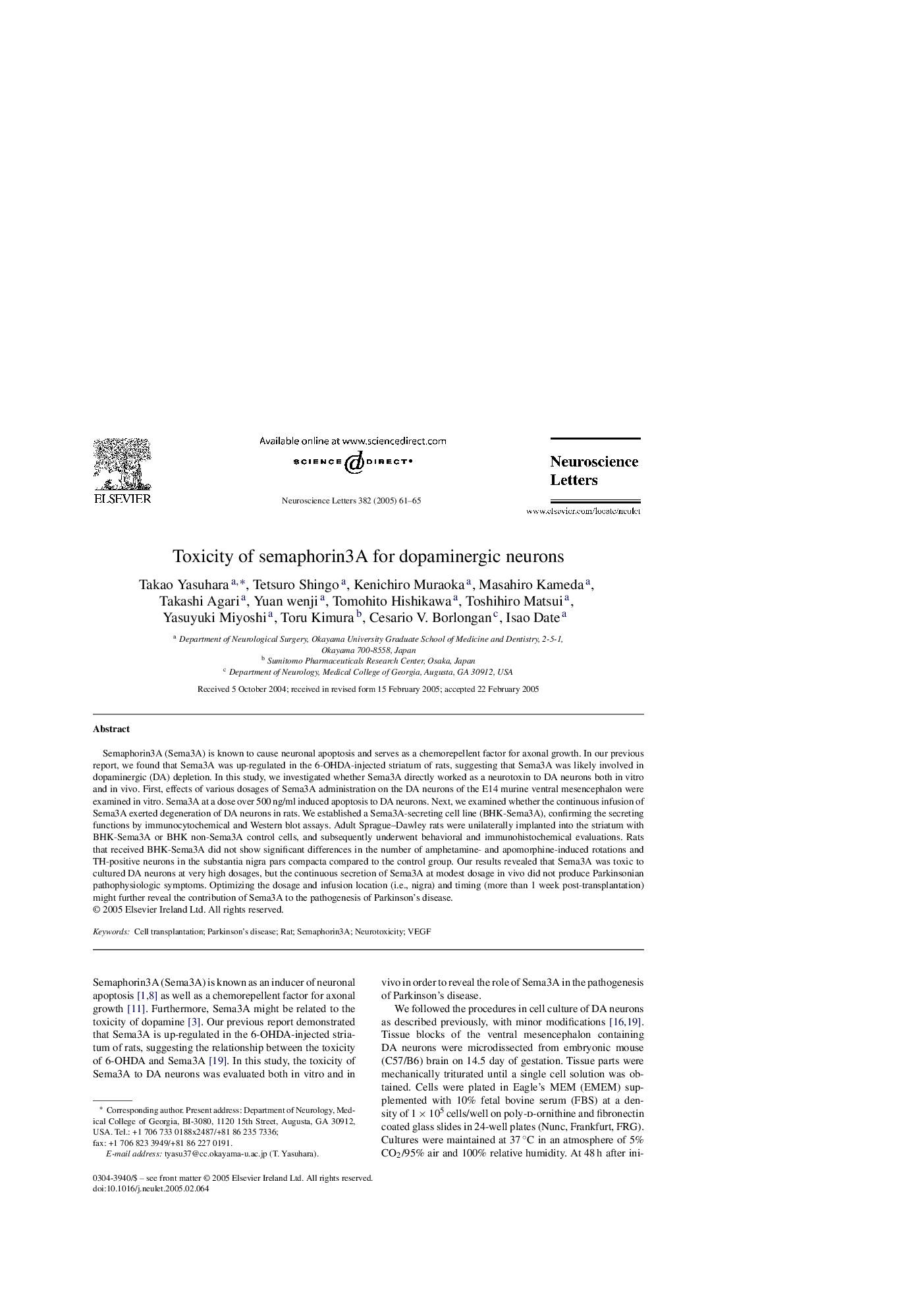| Article ID | Journal | Published Year | Pages | File Type |
|---|---|---|---|---|
| 9429341 | Neuroscience Letters | 2005 | 5 Pages |
Abstract
Semaphorin3A (Sema3A) is known to cause neuronal apoptosis and serves as a chemorepellent factor for axonal growth. In our previous report, we found that Sema3A was up-regulated in the 6-OHDA-injected striatum of rats, suggesting that Sema3A was likely involved in dopaminergic (DA) depletion. In this study, we investigated whether Sema3A directly worked as a neurotoxin to DA neurons both in vitro and in vivo. First, effects of various dosages of Sema3A administration on the DA neurons of the E14 murine ventral mesencephalon were examined in vitro. Sema3A at a dose over 500Â ng/ml induced apoptosis to DA neurons. Next, we examined whether the continuous infusion of Sema3A exerted degeneration of DA neurons in rats. We established a Sema3A-secreting cell line (BHK-Sema3A), confirming the secreting functions by immunocytochemical and Western blot assays. Adult Sprague-Dawley rats were unilaterally implanted into the striatum with BHK-Sema3A or BHK non-Sema3A control cells, and subsequently underwent behavioral and immunohistochemical evaluations. Rats that received BHK-Sema3A did not show significant differences in the number of amphetamine- and apomorphine-induced rotations and TH-positive neurons in the substantia nigra pars compacta compared to the control group. Our results revealed that Sema3A was toxic to cultured DA neurons at very high dosages, but the continuous secretion of Sema3A at modest dosage in vivo did not produce Parkinsonian pathophysiologic symptoms. Optimizing the dosage and infusion location (i.e., nigra) and timing (more than 1 week post-transplantation) might further reveal the contribution of Sema3A to the pathogenesis of Parkinson's disease.
Keywords
Related Topics
Life Sciences
Neuroscience
Neuroscience (General)
Authors
Takao Yasuhara, Tetsuro Shingo, Kenichiro Muraoka, Masahiro Kameda, Takashi Agari, Yuan wenji, Tomohito Hishikawa, Toshihiro Matsui, Yasuyuki Miyoshi, Toru Kimura, Cesario V. Borlongan, Isao Date,
